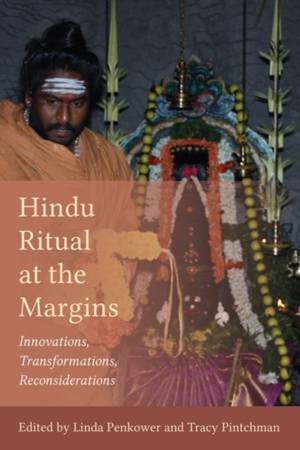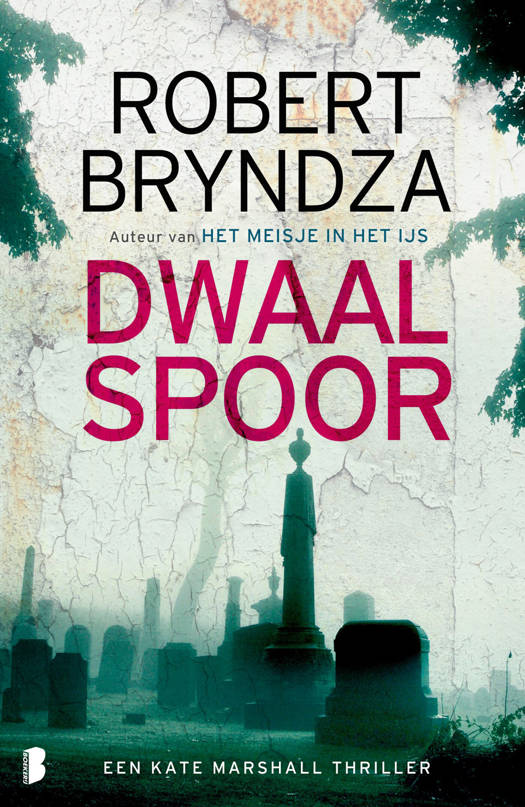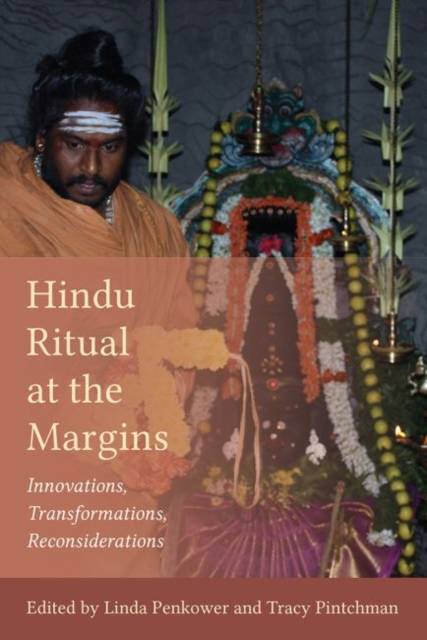
- Afhalen na 1 uur in een winkel met voorraad
- Gratis thuislevering in België vanaf € 30
- Ruim aanbod met 7 miljoen producten
- Afhalen na 1 uur in een winkel met voorraad
- Gratis thuislevering in België vanaf € 30
- Ruim aanbod met 7 miljoen producten
Hindu Ritual at the Margins
Innovations, Transformations, Reconsiderations
Omschrijving
Hindu Ritual at the Margins explores Hindu forms of ritual activity in a variety of "marginal" contexts. The contributors collectively examine ritual practices in diaspora; across gender, ethnic, social, and political groups; in film, text, and art; in settings where ritual itself or direct discussion of ritual is absent; in contexts that create new opportunities for traditionally marginalized participants or challenge the received tradition; and via theoretical perspectives that have been undervalued in the academy.
In the first of three sections, contributors explore the ways in which Hindu ritual performed in Indian contexts intersects with historical, contextual, and social change. They examine the changing significance and understanding of particular deities, the identity and agency of ritual actors, and the instrumentality of ritual in new media. Essays in the second section examine ritual practices outside of India, focusing on evolving ritual claims to authority in mixed cultures (such as Malaysia), the reshaping of gender dynamics of ritual at an American temple, and the democratic reshaping of ritual forms in Canadian Hindu communities. The final section considers the implications for ritual studies of the efficacy of bodily acts divorced from intention, contemporary spiritual practice as opposed to religious-bound ritual, and the notion of dharma.
Based on a conference on Hindu ritual held in 2006 at the University of Pittsburgh, Hindu Ritual at the Margins seeks to elucidate the ways ritual actors come to shape ritual practices or conceptions pertaining to ritual and how studying ritual in marginal contexts--at points of dynamic tension--requires scholars to reshape their understanding of ritual activity.
Specificaties
Betrokkenen
- Uitgeverij:
Inhoud
- Aantal bladzijden:
- 250
- Taal:
- Engels
- Reeks:
Eigenschappen
- Productcode (EAN):
- 9781611173895
- Verschijningsdatum:
- 29/10/2014
- Uitvoering:
- Hardcover
- Formaat:
- Genaaid
- Afmetingen:
- 152 mm x 229 mm
- Gewicht:
- 535 g

Alleen bij Standaard Boekhandel
Beoordelingen
We publiceren alleen reviews die voldoen aan de voorwaarden voor reviews. Bekijk onze voorwaarden voor reviews.











